
We are always looking for ways to keep workouts fresh and members engaged. Holidays are a great time to play off of the holiday theme and create unique workouts. Although some may think of them as cheesy, once they get into the workout they realize we haven’t forgotten what they came for – a challenge! Each year around Halloween we plan a pumpkin workout for our corporate fitness members. Why pumpkins? They are everywhere this time of year; why not include them in a workout? The pumpkins act as weights and props. They are less expensive than most gym equipment and come in a variety of shapes and sizes, allowing for a variety of fitness levels to participate.
Around this time each year we start brainstorming how/when we will do our annual pumpkin workout. Once a date and time are picked, we send out a registration link to our members as a “special invitation” to join us. The link also helps us keep track of how many people we will have participating, so we know how many pumpkins to purchase. Through word of mouth, a few flyers, and emails, we’ll typically have a group of 20-30 people!
Planning the workout is where our creativity is put to the test. We try to incorporate the pumpkin as much as possible while making sure the exercises are safe and effective. A few things to consider:
- Weight - Each of the pumpkins will be a different weight, so make sure the exercises can be performed with a variety of weights. (Medicine or Dynamax ball are good to have on hand for a quick swap when the pumpkin is not the appropriate weight.)
- Shape - All of the pumpkins will have a different shape (some round, some more oval). Take this into consideration when incorporating certain exercises.
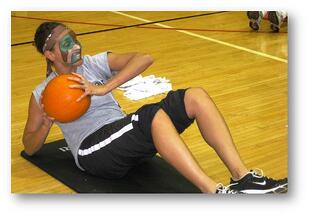 There are endless exercises that can be performed with the pumpkin. Start by thinking of go-to exercises that you would incorporate into one of your group fitness classes (pushups, squats, lunges, etc.). Now, think about how a “weight” or pumpkin can be added. For example, hold the pumpkin at your chest while performing a squat, put one hand on the pumpkin for an added challenge during a set of pushups, or push the pumpkin overhead after performing a lunge. Structure your workout so every major muscle group is targeted by the end. Also, throw in some cardio bursts, such as running with the pumpkin, bear crawling while rolling the pumpkin along at your side, or performing mountain climbers with your hands grasping the pumpkin. Add some core exercises as well (planks with a pumpkin roll, Russian twists, sit-up with a press, single leg v-ups). Think about the amount of space that you have and plan accordingly.
There are endless exercises that can be performed with the pumpkin. Start by thinking of go-to exercises that you would incorporate into one of your group fitness classes (pushups, squats, lunges, etc.). Now, think about how a “weight” or pumpkin can be added. For example, hold the pumpkin at your chest while performing a squat, put one hand on the pumpkin for an added challenge during a set of pushups, or push the pumpkin overhead after performing a lunge. Structure your workout so every major muscle group is targeted by the end. Also, throw in some cardio bursts, such as running with the pumpkin, bear crawling while rolling the pumpkin along at your side, or performing mountain climbers with your hands grasping the pumpkin. Add some core exercises as well (planks with a pumpkin roll, Russian twists, sit-up with a press, single leg v-ups). Think about the amount of space that you have and plan accordingly.
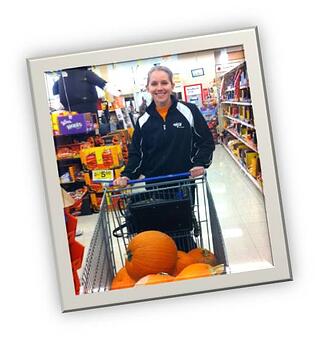 So, now you’ve secured participants and planned the exercises; don’t forget about one of the most important parts – pumpkin preparation! In the past, we’ve purchased our pumpkins a few different ways. A visit to the local supermarket allowed us to hand-pick the pumpkins sizes, but you’ll need some muscle power and a large car. We’ve also gotten our pumpkins from a distributor – this proved to require less hassle as the pumpkins were delivered right to our door, but also resulted in less variety in sizes.
So, now you’ve secured participants and planned the exercises; don’t forget about one of the most important parts – pumpkin preparation! In the past, we’ve purchased our pumpkins a few different ways. A visit to the local supermarket allowed us to hand-pick the pumpkins sizes, but you’ll need some muscle power and a large car. We’ve also gotten our pumpkins from a distributor – this proved to require less hassle as the pumpkins were delivered right to our door, but also resulted in less variety in sizes.
Depending on the condition of your pumpkins, they may need a quick cleaning to remove dirt and in most cases will need their stems cut so that no sharp edges remain. A basic saw or knife works well for this – just don’t wait until the last minute to make sure your pumpkins are ready to go! We advertise that pumpkin selection for the participants is first come, first served, but as mentioned above, we have extra medicine balls on hand if someone needs to switch out.
Now, you’re ready to give your participants a SPOOK-tacular experience with a souvenir pumpkin to remember it by! Looking for other ways to make fitness festive this October? Check out NIFS Fitness Management's Best Practice: SKELETONE!

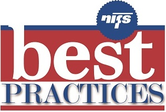
 We all know that exercising is good for us. It keeps us full of energy, lowers our risk for disease and helps us look our best. For some people, these reasons alone are enough to keep them going and motivated to stay on track with their fitness goals. On the other hand, we all know somebody who struggles to stay motivated enough to adhere to, or even begin a fitness regimen. Maybe this person is a family member, a friend, a co-worker or even yourself! Whatever the case may be, I am here to offer five tips that can help even the most unmotivated individual get going.
We all know that exercising is good for us. It keeps us full of energy, lowers our risk for disease and helps us look our best. For some people, these reasons alone are enough to keep them going and motivated to stay on track with their fitness goals. On the other hand, we all know somebody who struggles to stay motivated enough to adhere to, or even begin a fitness regimen. Maybe this person is a family member, a friend, a co-worker or even yourself! Whatever the case may be, I am here to offer five tips that can help even the most unmotivated individual get going. 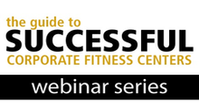
 To my knowledge, I don’t think there’s ever been a survey taken regarding this issue but personally, this is one of the most frustrating things to hear as a personal trainer, group exercise instructor, fitness manager, fitness specialist…fitness ANYTHING! So let me be clear right from the beginning.
To my knowledge, I don’t think there’s ever been a survey taken regarding this issue but personally, this is one of the most frustrating things to hear as a personal trainer, group exercise instructor, fitness manager, fitness specialist…fitness ANYTHING! So let me be clear right from the beginning.  At our client sites, we’ve been offering walking initiatives for years. After all, it’s kind of the original fitness opportunity at worksites, right? They’re super-simple, generally easy access for participants, and most people can participate. For better or worse, we’ve steered clear of linking the program with pedometers, but we do get a lot of really useful self-report data from participants for the program.
At our client sites, we’ve been offering walking initiatives for years. After all, it’s kind of the original fitness opportunity at worksites, right? They’re super-simple, generally easy access for participants, and most people can participate. For better or worse, we’ve steered clear of linking the program with pedometers, but we do get a lot of really useful self-report data from participants for the program. Let me start by saying I’m not here to dog personal training. There is absolutely a niche for that fee-based service, and there is clearly a clientele for it. It should definitely remain an option in fitness centers.
Let me start by saying I’m not here to dog personal training. There is absolutely a niche for that fee-based service, and there is clearly a clientele for it. It should definitely remain an option in fitness centers. The holidays are in full swing and everyone is singing about jingling bells, and Dasher and Dancer, Prancer and Vixen, Comet and Cupid, Donner and Blizten, and Rudolph of course. Another reoccurring song or tradition that has become a part of our culture in various ways is the 12 Days of Christmas. We see it on TV with 12 Days of Giveaways, our staff did 12 Days of Fitness via
The holidays are in full swing and everyone is singing about jingling bells, and Dasher and Dancer, Prancer and Vixen, Comet and Cupid, Donner and Blizten, and Rudolph of course. Another reoccurring song or tradition that has become a part of our culture in various ways is the 12 Days of Christmas. We see it on TV with 12 Days of Giveaways, our staff did 12 Days of Fitness via 



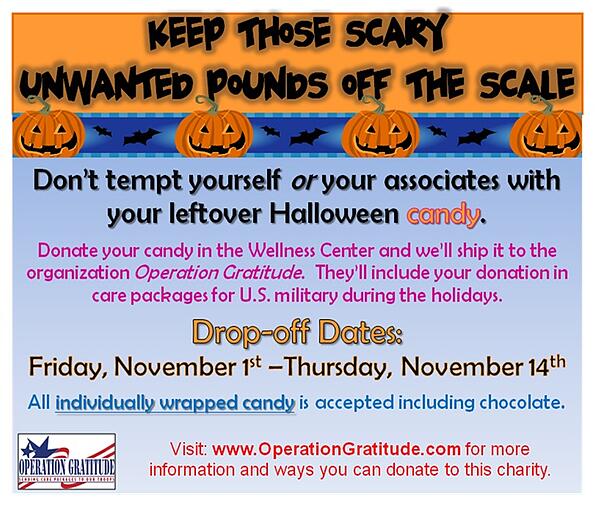
 In this fitness challenge we are going to tackle
In this fitness challenge we are going to tackle